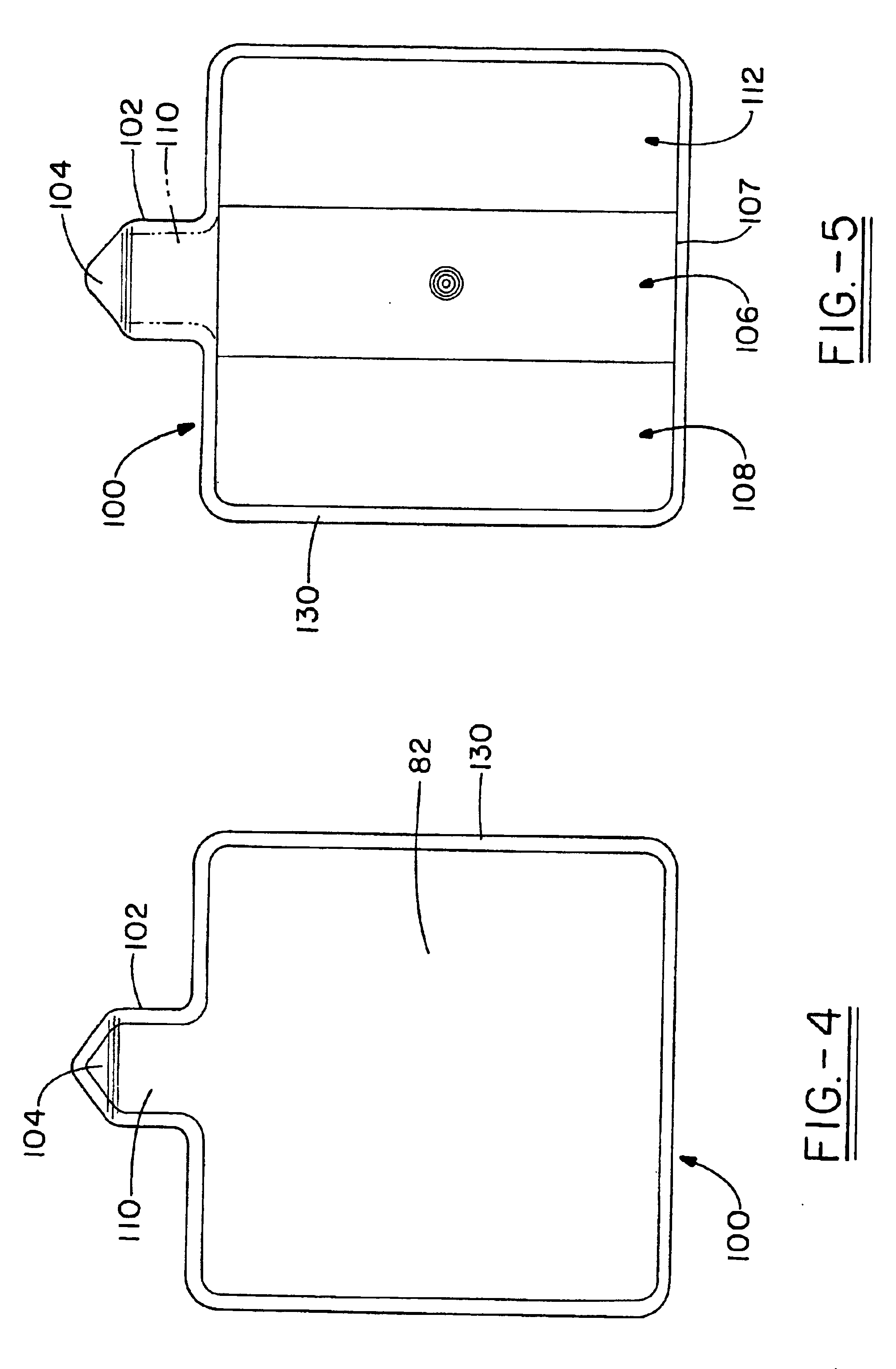In-mold coating injection inlet flow control
a technology of inlet flow control and inlet flow, which is applied in the direction of cellulosic plastic layered products, other domestic articles, synthetic resin layered products, etc., can solve the problems of difficult or impossible to produce an in-mold coated article which has been properly or fully coated to desired specifications
- Summary
- Abstract
- Description
- Claims
- Application Information
AI Technical Summary
Benefits of technology
Problems solved by technology
Method used
Image
Examples
example 1
[0088]A mold used to produce the plaque 200 shown in FIG. 9 was made. The mold cavity width is 12.0 inches. The mold cavity length is 20.5 inches. The mold has a hydraulic mold gate located in the center of the cavity for injection of a substrate. The mold has a tapered tab for the introduction of the IMC onto the part surface. The tab is located at the edge portion of the mold. The tab and Section A have thicknesses of 120 mils. Section B is 100 mils thick. Section C is 080 mils thick. Section D is 060 mils thick. As shown in FIG. 9, the plaque has four panels in a horizontal plane on the left side of the part and four panels in a vertical plane on the right side of the part. The panels on the horizontal plane on the right side of the part measure 6.0 inches long and 5.125 wide. The panels on the vertical plane measure 1.50 inches wide and 20.5 inches long. The plaque does not have an in-mold coating containment flange. The mold was placed in an 850 ton Cincinnati Milacron Vista in...
example 2
[0091]FIG. 10 shows a thermoplastic article with a variety of substrate (thermoplastic) thicknesses. It was shown through experimentation that in-mold coating flow is influenced by the substrate thickness. The example parts were generated using a 50-ton injection molding machine, a 6-inch square steel mold cavity fitted with an IMC injection nozzle. The substrate material was a PET thermoplastic and the in-mold coating was OMNOVA's Stylecoat® IMC. The mold temperature was 250° F. with a 30 second delay time prior to IMC injection.
[0092]In FIG. 10, sections E, F, and G are representations of varying part thickness as shown by the chart below. Section H represents the in-mold coating tab design utilizing a thicker middle section which facilitates an in-mold coating flow channel at the in-mold coating nozzle tip site. Section I represents the thin sectioned containment flange.
[0093]The overall objective in designing a mold with thin and thick sections is to preferential channel the in-...
PUM
| Property | Measurement | Unit |
|---|---|---|
| pressure | aaaaa | aaaaa |
| thickness | aaaaa | aaaaa |
| thickness | aaaaa | aaaaa |
Abstract
Description
Claims
Application Information
 Login to View More
Login to View More - R&D
- Intellectual Property
- Life Sciences
- Materials
- Tech Scout
- Unparalleled Data Quality
- Higher Quality Content
- 60% Fewer Hallucinations
Browse by: Latest US Patents, China's latest patents, Technical Efficacy Thesaurus, Application Domain, Technology Topic, Popular Technical Reports.
© 2025 PatSnap. All rights reserved.Legal|Privacy policy|Modern Slavery Act Transparency Statement|Sitemap|About US| Contact US: help@patsnap.com



